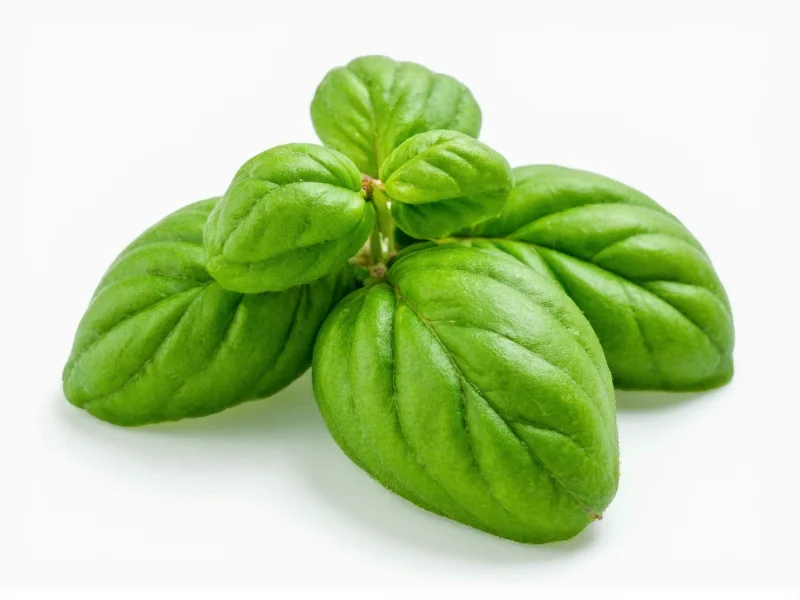Understanding herb conversions is essential for successful cooking. When a recipe calls for fresh basil but you only have dried basil available, knowing the proper substitution ratio prevents flavor imbalances in your dishes. The 1:3 ratio applies specifically to basil, though other herbs may have slightly different conversion rates.
Why the 1:3 Ratio Matters in Cooking
Dried basil contains approximately three times the flavor concentration of fresh basil. This concentration occurs because the drying process removes moisture while preserving the essential oils that give basil its distinctive taste and aroma. When you substitute dried for fresh without adjusting quantities, your dish can become overpowering or bitter.
Detailed Conversion Chart for Basil Substitutions
| Dried Basil | Fresh Basil Equivalent | Best Used In |
|---|---|---|
| ¼ teaspoon | ¾ teaspoon | Delicate sauces, dressings |
| ½ teaspoon | 1½ teaspoons | Marinades, egg dishes |
| 1 teaspoon | 1 tablespoon | Tomato sauces, soups |
| 1 tablespoon | 3 tablespoons | Stews, braises, hearty dishes |
| 2 tablespoons | 6 tablespoons (¼ cup) | Long-cooking recipes |
Flavor Profile Differences Between Dried and Fresh Basil
Fresh basil offers bright, sweet notes with hints of anise and pepper. Its flavor is more complex and delicate. Dried basil develops deeper, earthier tones with slightly less sweetness but more concentrated herbal notes. The drying process changes the chemical composition, making dried basil better suited for long-cooking dishes where its flavors can fully integrate.
When to Use Each Type of Basil
Fresh basil shines in:
- Caprese salads and fresh tomato dishes
- Pesto and cold sauces
- Garnishing finished dishes
- Short-cooking recipes under 20 minutes
Dried basil works best in:
- Tomato-based sauces simmered for 30+ minutes
- Meatloaf and meatball mixtures
- Herb blends and rubs
- Dry marinades and spice mixes
Practical Tips for Substituting Dried Basil for Fresh
Add dried basil early in the cooking process to allow time for rehydration and flavor development. For the most accurate dried basil equivalent measurement, crush the dried leaves between your fingers before adding them to release essential oils. When adjusting recipes, remember that dried herbs generally need about 20 minutes of cooking time to fully express their flavors.
For cold dishes or recipes with minimal cooking time, consider using slightly less dried basil than the standard ratio suggests. The lack of heat prevents full flavor release, potentially making the dried herb taste dusty or overpowering.
Storage Considerations for Maximum Flavor
Proper storage affects how much dried basil equals fresh in terms of flavor intensity. Store dried basil in an airtight container away from light and heat. Properly stored, dried basil maintains peak flavor for 6-12 months. After this period, you may need to increase the quantity slightly to achieve the same flavor impact as fresh.
Fresh basil keeps best when stems are placed in water at room temperature, away from direct sunlight. Never refrigerate fresh basil, as cold temperatures cause rapid deterioration of both texture and flavor.
Common Substitution Mistakes to Avoid
Many home cooks make the error of using equal amounts of dried and fresh basil, resulting in overly strong flavors. Another common mistake is adding dried basil at the end of cooking, when it hasn't had time to rehydrate and integrate. For the most accurate dried basil to fresh conversion in delicate dishes, consider using 25% less than the standard ratio.
When substituting dried for fresh in pesto, the texture difference becomes significant. Dried basil won't create the same emulsion as fresh, so it's generally not recommended for traditional pesto recipes.
Adjusting Recipes for Optimal Results
When converting recipes that call for fresh basil to use dried instead, follow these steps:
- Measure the fresh basil amount called for in the recipe
- Divide by three to get the dried basil equivalent measurement
- Add the dried basil early in the cooking process
- Taste and adjust after 15-20 minutes of cooking
- Consider adding a splash of acid (lemon juice or vinegar) to brighten flavors
For baking applications that call for fresh basil (like certain breads or savory pastries), use 75% of the standard conversion ratio, as the dry heat of ovens intensifies herb flavors further.











 浙公网安备
33010002000092号
浙公网安备
33010002000092号 浙B2-20120091-4
浙B2-20120091-4